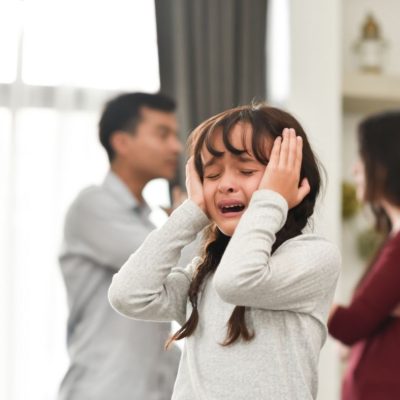In 2019, domestic violence accounted for 54% of the murders in Calgary alone. This shocking statistic is the unfortunate reality that so many Albertans, particularly women, face.
According to the most recent data from Statistics Canada, Alberta has the third-highest rate of domestic violence in Canada, just behind Saskatchewan and Manitoba.
With an increase in unemployment due to COVID-19 and a struggling economy, domestic violence rates are likely to be higher in 2020.i
What is Domestic Abuse?
When people think of domestic abuse, they often imagine physical violence. Though violence is the most dangerous type of abuse, it’s not the only form. Domestic abuse is when one person in an intimate relationship or marriage tries to dominate and control the other person, either physically, emotionally, or financially.
Domestic abuse can happen to anyone. It occurs in heterosexual and same-sex partnerships, in all ethnic backgrounds and financial situations, and in all age groups.
People of any gender can experience domestic violence; however, women are the most common victims of this abuse, with men being the most common perpetrators. Although women are more often victimized, men also experience abuse – particularly verbal and emotional.
Domestic violence does not discriminate, but some groups and genders are more vulnerable. The Canadian Labour Congress website indicated that “Indigenous women are 5-7 times more likely to be killed by an abusive partner or ex-partner than non-Indigenous women.” Women that live in rural communities are also a high risk due to a lack of access to shelters.

5 Signs of Domestic Abuse
Those living in a hostile environment often try to cover up the abuse for various reasons. If you feel that a friend, family member, or colleague may be in a domestic violence situation, learning the warning signs can help you help them.
1. Physical Injuries: Broken bones, loss of hearing, black eyes, and bruises may be the most obvious signs of abuse. A victim of abuse may attribute these injuries to a simple accident or clumsiness. If you notice these injuries regularly, this could be a red flag.
2. Inappropriate Clothing: If a friend or colleague appears to be wearing inappropriate clothing for the season (such as long sleeves or turtlenecks in the summer or wearing sunglasses indoors), this may be a sign that they are living with an abusive partner.
3. Avoidance: If you notice a family member or friend suddenly canceling plans, making excuses not to meet up, or always being unavailable, this could be a red flag. Often, abusers try to isolate their victims from their family and friends.
4. Emotional Signs:
- Becoming overly apologetic
- Low self-esteem, and
- Loss of interest in once enjoyed activities and hobbies.
These could all be signs of abuse.
5. Relationship Dynamic: Does their partner talk them down or share embarrassing stories about the other person in front of others? Your friend’s significant other may try to pass off rude or critical remarks as just “jokes.” You may even notice your friend acting like it’s no big deal, laughing along with their partner. However, these comments may be a sign of abuse.
Not all warning signs indicate abuse, which is why it’s crucial to never jump to conclusions. Instead, use these signs to spark a conversation with that friend/colleague by following the SNCit! Rule.
SNCit! See it. Name it. Check it.
The Canadian Labour Congress shared their 3 step system that you can take when speaking to a person who you suspect may be a victim of abuse:
Step 1: See it – learn the warning signs, and treat your suspicions and concerns seriously.
Step 2: Name it– If you notice any warning signs, bring up your concerns. Try your best not to make assumptions, but stick to the facts. Remember, a bruise doesn’t necessarily mean abuse. What you could do instead is mention, “I noticed a bruise on your right arm. Can you tell me what happened?” or “I heard your partner yelling on the phone. Is everything okay? Do you need to chat?”
Step 3: Check it– the best thing you can do is ask questions such as “are you ok?” or “what can I do to support you?” Next, confirm whether for not the person is experiencing abuse.
Note: Though your concerns may be coming from good intentions, know that this can be difficult for someone to hear. They may deny the abuse, become defensive or emotional. If this occurs, do not take it personally. Let them know you are available and here to help.

November is Family Violence Prevention Month in Alberta. If you or someone you know is experiencing domestic or dating violence, call the Family Violence Information Line available 24/7 at 310-1818.
If speaking on the phone isn’t possible or safe, the Government of Alberta has an anonymous Family Violence online chat available from 8 a.m. – 8 p.m. MST daily.
Another helpful article from Wristband Resources provides more information on domestic violence and getting help.
Lastly, if you suspect someone is experiencing family abuse, there are several helplines available. For adults, call the Alberta provincial abuse helpline at 1-855-4HELPAB (1-855-443-5722), and for children, call the Child Abuse Hotline at 1-800-387-KIDS (5437).
Any type of abusive behaviour is never acceptable, whether emotional, verbal, financial, or physical. You deserve to feel valued, respected, and safe.
At McGuiness Law, we offer free consultations over the phone or virtually for victims of crime. Whether you decide to move forward with a case or not is up to you, but it is best to know what options you have available to keep you and your family safe during this time.
Book your FREE CONSULTATION with McGuiness Law today by calling 780 900 7941.